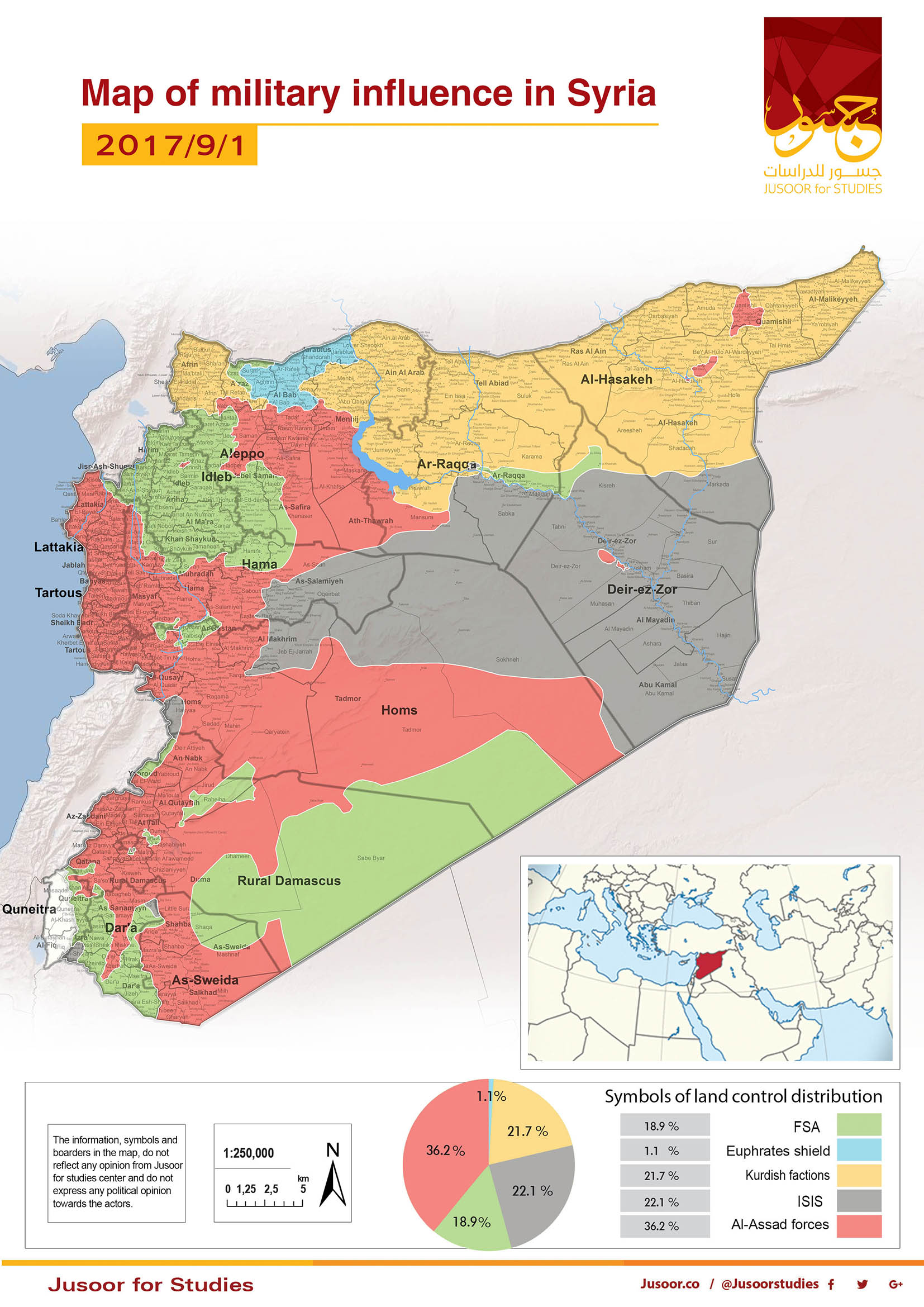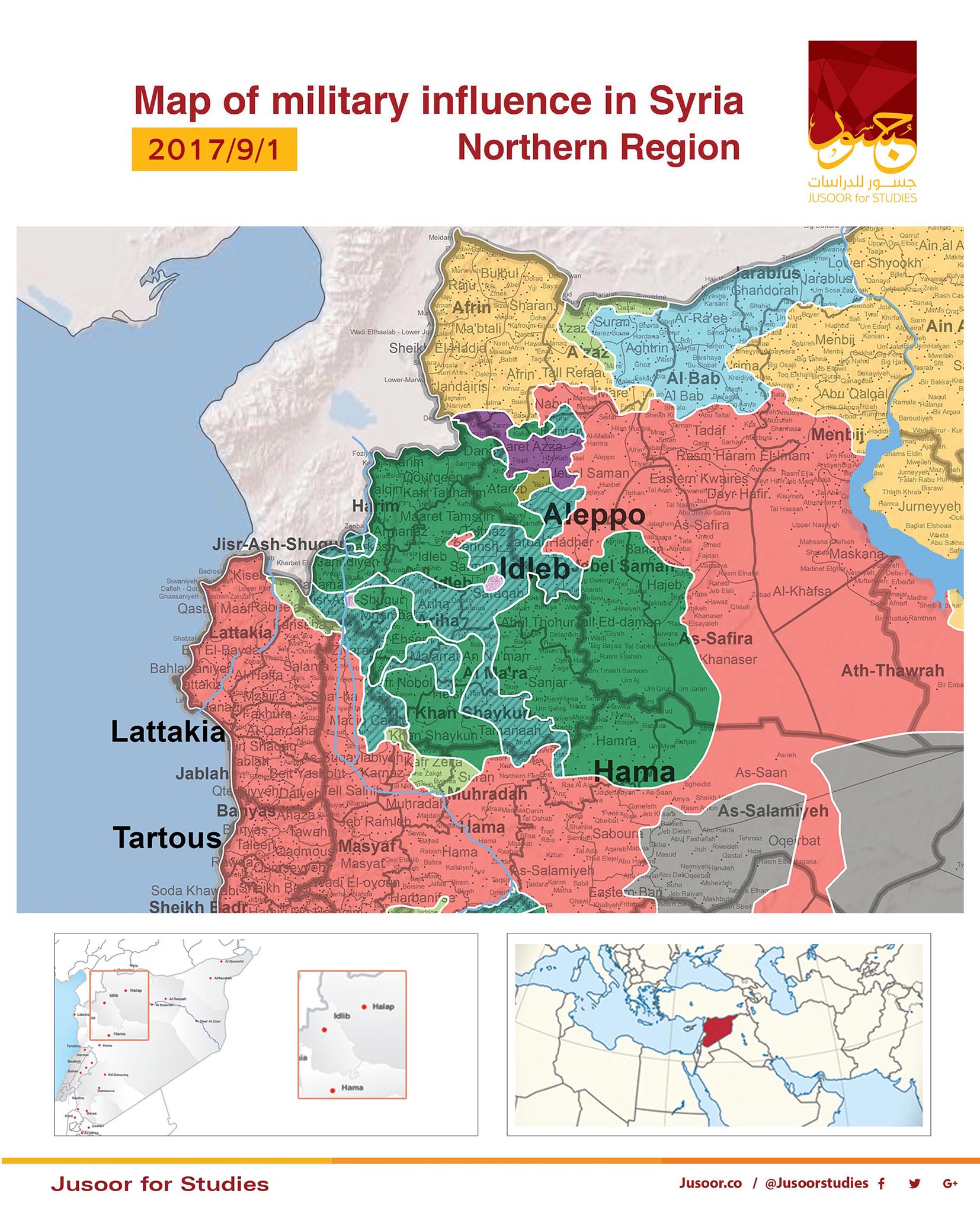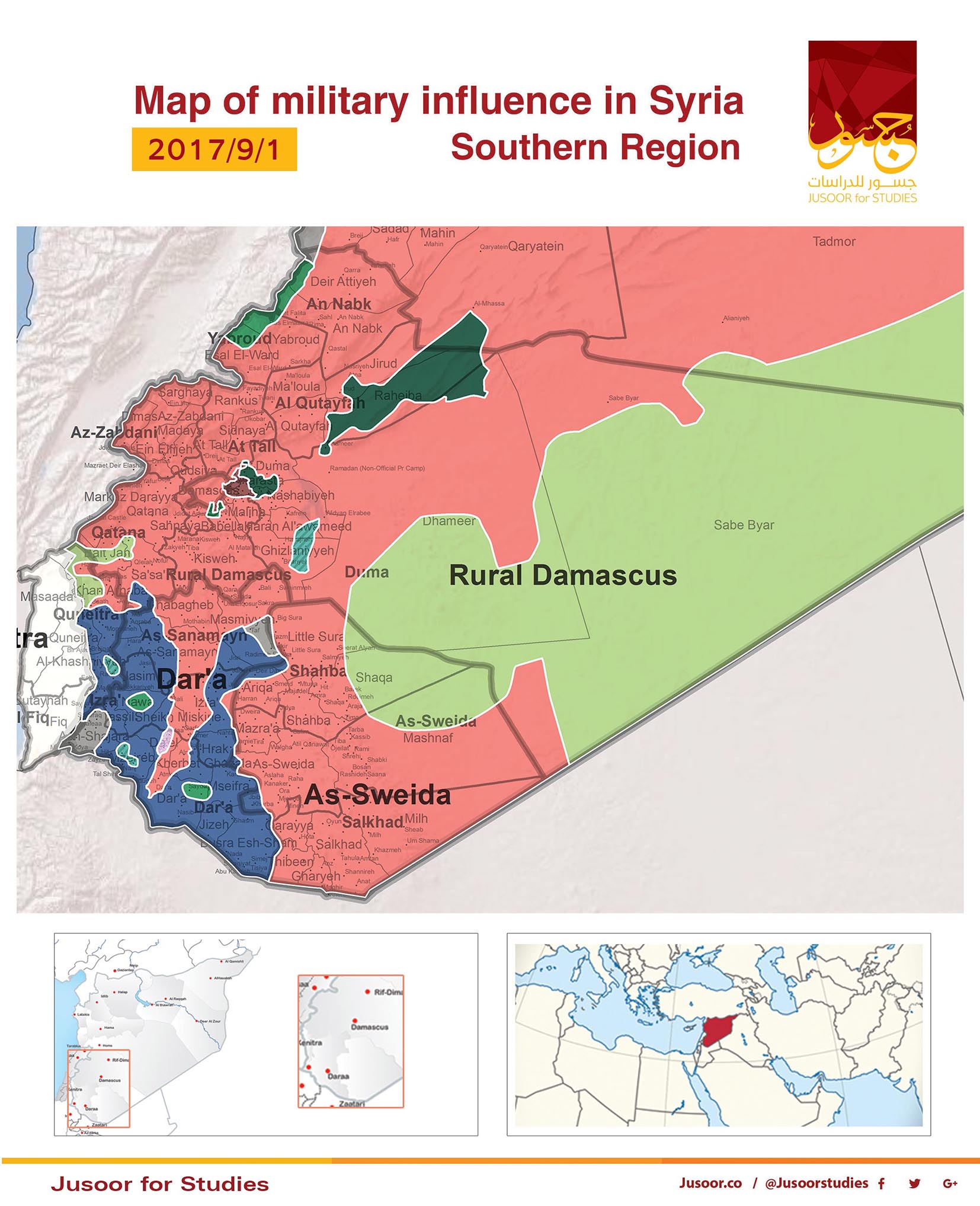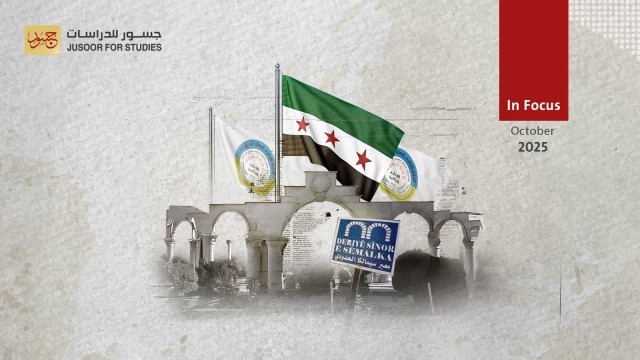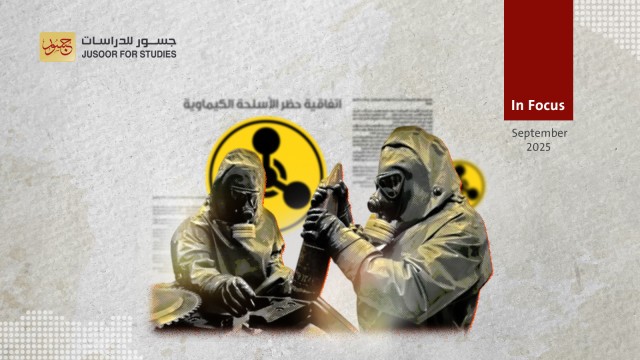Map of military influence in Syria 01-09-2017
Jusoor for Studies issued the map of influence of August 2017, that shows stable percentages of the total control between the different conflicting parties excluding regions controlled by ISIS in the East Hama Governorate and south Ar-Raqqa city.
The map shows a gradual shrinkage in areas controlled by ISIS compared to last July, while there has been an expansion in the areas controlled by the regime due to intensifying its military operations on many axes in Al Badia east of Syria. ISIS is now controlling 22,1% after losing 3% that the regime has gained, which has increased the control of the latter to 36.2%
No changes took place in the lines of contact between the Syrian regime and opposition, at which the two parties have kept to the positions that were included in the "de-escalation zones agreement". However the regime has constantly attempted to make progress on eastern Al Ghouta front during August 2017, which met with failure. These attempts violate the agreement. On the other hand, the regime was able to make a slight progress at the expense of the Syrian opposition in Al Hammad Badia East of Damascus and As-suwayda Governorates.
The Syrian armed opposition kept the same percentage of its controlled areas in the previous month which is 20 % including 1,1 % of the Euphrates Shield zones.
The Areas controlled by the Syrian Democratic Forces' (SDF) did not witness any considerable changes, as it the group has focused on making more progress in Ar-Raqqa city. The total percentage areas controlled by the SDF is 21.7%.
The Northern Region:
The map of military influence in the northern region of Syria in August 2017 shows that the percentages of areas controlled by the Syrian regime and opposition remained the same since the ceasefire agreement. Moreover, the opposition factions maintained the percentage of controlled areas in Idlib Governorate, and no changes took place in the Euphrates Shield zones despite
attempts from the Syrian opposition to make progress south of A'zaz at the expense of the SDF.
The Eastern Region
The map of military influence in the northern region of Syria in August 2017 shows a notable change in percentages of control and influence between the different parties.
The regimes forces backed by foreign militias were able to control the whole Al Sukhna city east of Homs Governorate, imposing a suffocating siege upon Uqayribat east of Hama city, along with the north area of T4 military airport in addition to a military pocket east of Uqayribat which runs from El Taebah village north of Al Sukhna city towards an area south of Al Rasafa city, as ISIS controls these regions.
As for the SDF backed by the international coalition, there has been slow progress in Ar-Raqqa neighborhoods, at which 50% of the city's neighborhoods have come under its control in August 2017 according to a statement from the international coalition's American envoy. However, this percentage did not change the percentage of the SDF total influence. A shrinkage in the areas controlled by ISIS is obvious after losing one of its most significant posts in Al Badia represented by Al Sukhna city along with the siege imposed upon its combatants in two military pockets. The first one in Uqayribat and the other one north of Al Sukhna. On the other hand, there were failed attempts from the regimes forces to make progress in Deir ez-Zor fronts, as the city is under siege by ISIS.
The Southern Region
The map of military influence in the southern region of Syria in August 2017 shows that the percentages of areas controlled by different parties remained the same apart from the fronts in As-Suwayda Governorate's country side. This was because the regimes forces managed to control substantial areas after the withdrawal of the Army of Free Tribes and attempts by the latter to recapture these areas have failed.
The regimes forces are trying to impose a siege upon the Syrian opposition in Al Hammad Badia while the latter party is still holding on to its positions in Eastern Qalamoun which is under siege by Al Assad’s militias. Moreover, the Eastern Qalamoun region did not witness any ceasefire violations, as the Syrian regime seeks to consolidate this agreement with with the opposition factions in Al-Ruhaybah and Jayrud.
As for the lines of contact between the Syrian regime and opposition on the fronts of Daraa, Al Quneitra, and As-Suwayda governorates, there is a clear commitment from both parties to the signed agreement between U.S and Russia on 7th July 2017.
Concerning Eastern Al Ghouta, there are no changes in the percentage of controlled areas despite the substantial military campaign by the Syrian regime to impose a siege on Jobar neighborhood starting from Ein Tarma axis. However, the regime’s attempt met with failure, leading to a ceasefire agreement between Faylaq Al Rahman and the regime forces under Russia’s auspices on August 19th 2017.
Through issuing the map of military influence, Al Jusoor center seeks to show the most notable developments on the ground in the Syrian arena along with the implications this has for the percentage of the total and effective influence nationwide allowing researchers and followers to analyze the contents and indications at the political level.
